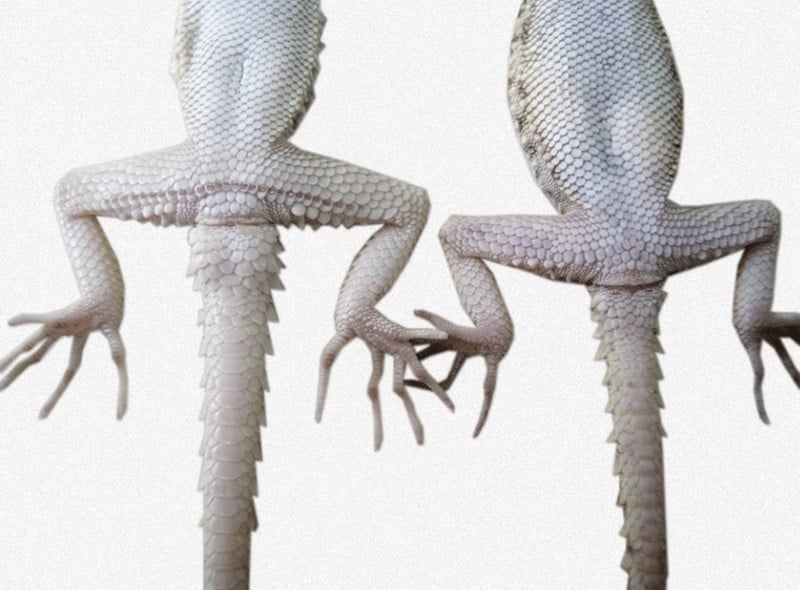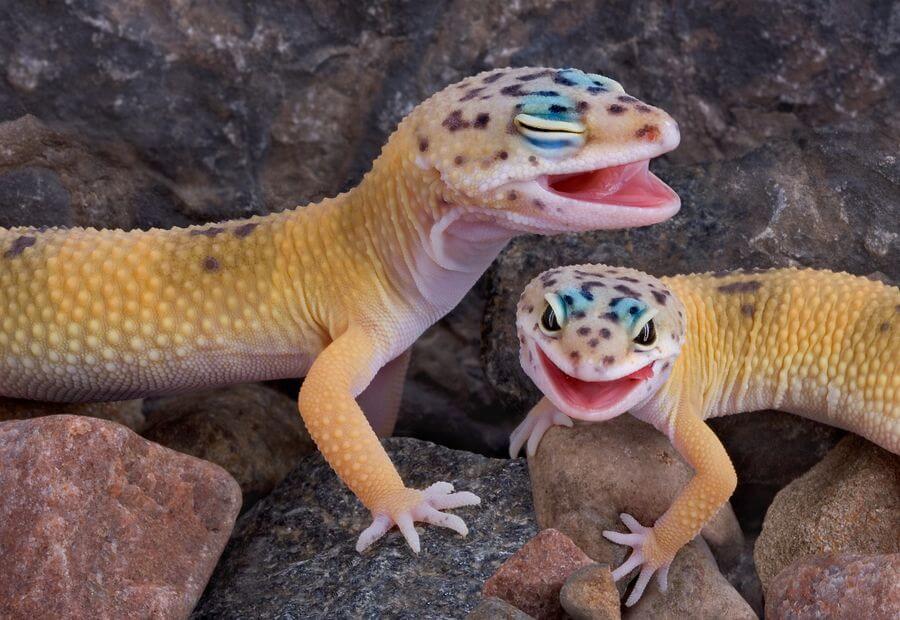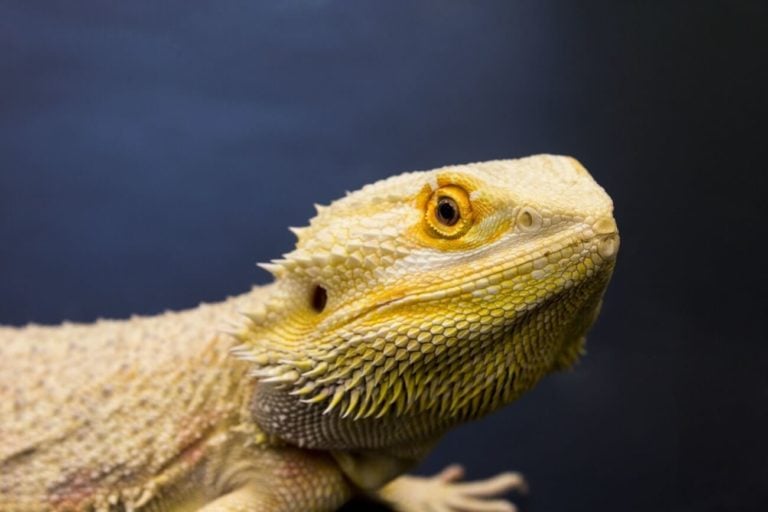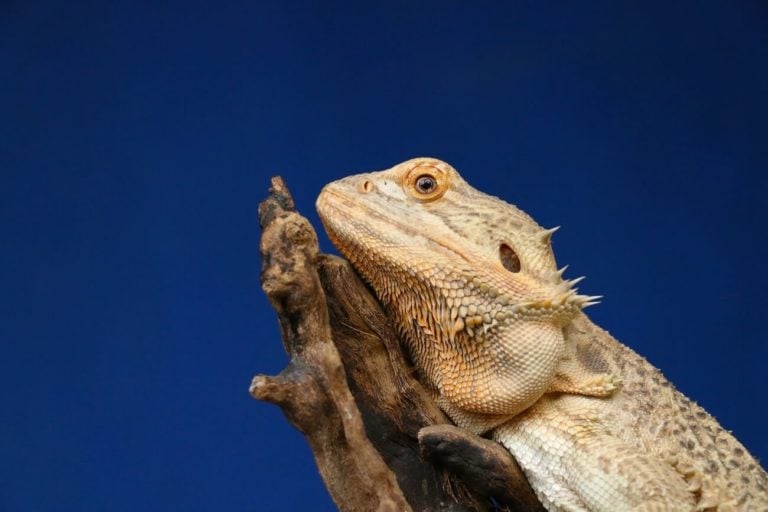Learning how to tell if a leopard gecko is a male or female takes a little bit of practice, but anyone can do it.
This guide will teach you what to look for to determine what gender you have on your hands!
Table of Contents
- Why It’s Important To Know If Your Leopard Gecko Is A Male Or Female
- How To Tell If A Leopard Gecko Is Male Or Female
- General Similarities & Differences Between Leopard Gecko Genders
- Is It Possible To Tell If A Baby Leopard Gecko Is A Boy Or Girl?
- The Right Way To Handle A Leopard Gecko When Determining Its Gender
- What Factors Impact The Likelihood Of A Leopard Gecko Being Male Or Female?
- Conclusion
Why It’s Important To Know If Your Leopard Gecko Is A Male Or Female
Male and female leopard geckos look very similar, and most people couldn’t tell the difference without close observation. But knowing whether you have a boy or girl gecko matters because it can affect the care you provide.
Sexing is crucial when setting up enclosures for multiple geckos. Males can be aggressive and territorial, so you must know which of these pet lizards are males to avoid housing them together. It’s also a good idea to separate males and females unless you plan to breed them.
When it comes to male vs. female leopard geckos, each also has unique health risks. Females can lay eggs even when living alone. They’re also susceptible to ovulation issues and complications like egg binding. Meanwhile, the males can experience problems like hemipenis prolapse.
Knowing whether you have a male or female enables you to provide the right care and helps you plan for any potential issues your gecko might face in their lifetime.
How To Tell If A Leopard Gecko Is Male Or Female
There are many ways to determine if you have a male or female leopard gecko. Leopard geckos are sexually dimorphic, so there are several key characteristics you can look at.
These differences are subtle, but it’s still quite simple to distinguish between males and females if you know where to look.
Here are a few ways to tell the gender of your leopard gecko.

1. Hemipenal Bulges
The first things to look for are the hemipenal bulges.
Hemipenal bulges are a male-only characteristic. The bulges house the hemipenes, which are male reproductive organs.
When you look at a male leopard gecko, the hemipenes stay beneath the skin. They only come out during mating. They’ll pop out from either side of the vent during that time. But the rest of the time, they’ll sit beneath the skin, creating a bulge.
Because only males have hemipenes, hemipenal bulges indicate you have a male.
These bulges are on the underside of the leopard gecko near the base of the tail. Carefully observe the area behind the vent on both sides of the tail base. On males, there will be a visible bulge. On females, it’ll be smooth.
Expert Tip: Some breeders might mention that they apply pressure to the area to cause the hemipenes to protrude. However, you should never do this.
There’s a serious risk of hemipene prolapse and other injuries. Plus, leopard geckos aren’t used to being handled this way. As a result, they might become stressed and drop their tail. If you see the bulges, that’s all the confirmation you need.
2. Femoral Pores
The femoral pores are another characteristic that’s visible in males. Females have pores as well, but they’re usually faint and difficult to see. With males, they’re easy to observe.
These pores run along the upper thigh. They’re on the underside of the hind legs, appearing as a straight line. The pores look like large dots. Sometimes, they become clogged and appear like blackheads.
Femoral pores play an important role in mating. Male leopard geckos use them to release pheromones. The pheromones can attract females and warn other rival males they’re in the area.
While both males and females have femoral pores, they’re substantially larger and more visible in the males. So, seeing the pores is another telltale sign you have a male leopard gecko.
3. Preanal Pores
Next up, we have the preanal pores.
The preanal pores look similar to femoral pores, and you can look for both when trying to tell if your leopard gecko is a male or female. Like the femoral pores, preanal pores excrete pheromones. They can also excrete a waxy substance.
You’ll need to look at your lizard’s vent to see the preanal pores. The vent is what holds the opening for the cloaca, the orifice that allows your gecko to expel waste in their gastrointestinal and urinary tract.
Both males and females have preanal pores. But like before, they’re more visible in males. Male preanal pores are large and prominent. They stand out against the light-colored underbelly of the leopard gecko.
They look nearly identical to femoral pores. However, they’re arranged in a V-shaped row before the vent. If you see the pores, you have a male. If you don’t, you likely have a female.
4. Size & Build
Last but not least, we have the lizard’s overall size and build.
If you own multiple leopard geckos, you can easily see the difference between males and females. There is some overlap, but males are typically bigger.
They can get a couple of inches bigger than females when they reach maturity. Furthermore, they have a bulkier and more muscular build. The differences are most obvious around the neck and head, but you can compare the entire body of a male and female to observe the differences.
Female leopard geckos reach an average adult size of 7 to 9 inches. They usually weigh no more than 75 grams, with smaller lizards only weighing 50 grams.
Males, on the other hand, reach sizes of 9 to 11 inches. The bigger male lizards will reach 90 grams, and the smaller ones are around 70 grams. So, the smallest males will look the same as the largest females.
Because there is some overlap, it’s best to look at the other differentiators, too. For example, if you see the femoral and preanal pores, observe the hemipenal bulge, and notice that this lizard is noticeably larger than the rest, you have a male!
General Similarities & Differences Between Leopard Gecko Genders
The differences between leopard geckos are subtle. These lizards look very similar to the untrained eye. But once you know what to look for, the different characteristics of males and females become obvious.
As a whole, the leopard gecko can grow to reach sizes of 7 to 11 inches. To the average person, there’s not much size difference between lizards. However, the males are almost always bigger.
As mentioned earlier, males can get up to 11 inches long. Meanwhile, females often stop growing once they reach 9 inches.
In terms of appearance, there are no distinct sexually dimorphic traits. Leopard geckos aren’t like other species that have different coloration between sexes. So, you have to look at other body parts to tell the gender of them.
Most of your observations will occur on the lizard’s underside near the vent and tail base.
Males have three distinctive characteristics. These include the femoral pores on the upper thigh of the hind legs, preanal pores above the vent, and hemipenal bulges on both sides of the tail base.
If you see those three things, you have a male.
Females also have femoral and preanal pores, but they’re difficult to spot. They blend in better with the skin, and most people can’t see them with their naked eye. On males, they’re prominent and usually take on a darker color for more visibility.
The hemipenal bulges don’t occur in females at all.
When it comes to temperament, male and female leopard geckos are similar. They’re both crepuscular and relatively docile. Both can also drop their tails when stressed.
But you will start noticing temperament differences when other leopard geckos are present. Male geckos are notoriously territorial. Of course, personalities can vary with every individual lizard.
However, males are more likely to show aggression in the presence of other males. Females are more passive, and you can often keep multiple females together in a large enclosure. However, that’s not possible with males.
Is It Possible To Tell If A Baby Leopard Gecko Is A Boy Or Girl?
It is impossible to tell whether a baby leopard gecko is a male or female based on physical characteristics alone. With that being said, you may get more information from the breeder since these are some factors during the egg incubation period that can influence the sex of the lizard (more on that later).
But after the gecko hatches, you can’t observe the physical differences.
Babies and juveniles need time to grow before you can start comparing sizes and anatomy. Hatchlings are only 3 to 4 inches long. The key characteristics herpetology enthusiasts use to sex the lizards aren’t developed yet.
You can try to look for femoral pores, preanal pores or hemipenal bulges. But boy and girl leopard geckos will look identical when they’re young.
It’s best to wait several months before you put your geckos through the stress of sexing them. Most experts recommend waiting until the lizards are at least six months old. You may have to wait several months more before the males develop their distinct anatomy.
The Right Way To Handle A Leopard Gecko When Determining Its Gender
Before looking for any male traits, you need to know how to handle your leopard gecko.
The most challenging aspect of telling the gender of a leopard gecko is keeping them comfortable. While this species is relatively docile, they need time to warm up to you. That’s one of the reasons why it’s best to wait with young lizards.
In addition to not being fully developed, babies and juveniles may find the process too stressful. Even adults will feel that way if you’re not careful. Remember: This species can drop its tail when threatened, and it’s not uncommon for this to happen when you try to determine their sex.
The best way to handle your leopard gecko when determining if they’re a male or female is to make them feel comfortable before you go in with your hand. Work on getting your gecko to trust you first.
If you’ve recently brought them home, wait several weeks until they’re comfortable in their new environment. You should never attempt to determine the gender of your leopard gecko until it’s comfortable with you holding it normally.
When you’re ready, stroke your lizard to establish contact before gently sliding your hand underneath its body. With a gently yet firm grip, hold your gecko’s body. If your lizard attempts to wriggle away, let it.
Don’t force this process! Doing so will only cause unnecessary stress.
Once your leopard gecko is comfortable, raise your hand up and separate your fingers to look at their underside. Avoid flipping your gecko over. It’s far more comfortable for your lizard if you look up from above than force them on their back.
What Factors Impact The Likelihood Of A Leopard Gecko Being Male Or Female?
Believe it or not, the incubation temperature can impact the likelihood of a leopard gecko developing into a male or female. It’s not an exact science, and there are no guarantees. But with that being said, breeders will set their incubators strategically to get the gender they want.
Speaking with your breeder is a great way to tell if your leopard gecko is a male or female before it reaches maturity. They can tell you about the incubation process, giving you a better idea of whether you have a boy or girl.
Generally, hotter incubation temperatures will increase the chances of getting males.
At 80 degrees Fahrenheit, the incubation period results in nearly all females. Breeders wanting an even mix will set the incubators at 87 degrees. When they wish to hatch all males, they’ll incubate at 90 degrees.
Conclusion
Now that you know how to tell the gender of a leopard gecko, it’s time to take a look at your lizard. Reference the tips in this guide if you need a refresher, and you shouldn’t have any trouble!
If you have any questions, you’re more than welcome to send them our way. Good luck!



